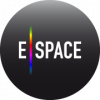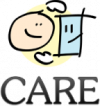September 2017 (48 months)
CORTEX (2017-2021) aimed at developing innovative core monitoring techniques that allow detecting anomalies in nuclear reactors, such as excessive vibrations of core internals, flow blockage, coolant inlet perturbations, etc. The technique are mainly based on using the inherent fluctuations in neutron flux recorded by in-core and ex-core instrumentation, from which the anomalies will be differentiated depending on their type, location and characteristics. The method is non-intrusive and does not require any external perturbation of the system.
The project resulted in a deepened understanding of the physical processes involved. This allowed utilities to detect operational problems at a very early stage and to take the proper actions before such issues have any adverse effect on plant safety and reliability. With an ageing fleet of nuclear reactors utilising more challenging fuel assembly designs, core loadings, and operating more often in load-follow, new operational problems have been observed during the last decade and will become more frequent in the future. Through the detection and characterisation of anomalies, the availability of nuclear-generated electricity were further improved. The outputs of CORTEX contribute to reducing the CO2 footprint and impact on the environment, and to a higher availability of cheap base-load electricity to consumers. Implementing this technique in the existing fleet of reactors is expected have a major impact, and can also be applied to future reactor types and designs.
Funded under : Euratom Research and Training Programme 2014-2018









